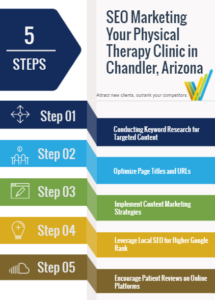Hi All, I have spent the last 2-3 weeks studying the recent Google algorithm changes, to make sure I guide you in the right direction as your Dallas SEO Consultant. Below is my rehash of what I learned about the Panda and Penguin updates.
In Google’s big push to clean up web spam, they first implemented Panda, an algorithm update that occurred in 2011. Panda targeted mainly content farms and article marketing sites, those that were mass producing and distributing content, written with the end goal of manipulating the search results. The content on these sites and in these articles was not serving the needs of users, and the web was becoming littered with them, which was keeping many good sites down and frustrating web surfers (like me for one).
The Panda update also went after shallow content, unverified content, misleading content, duplicate content, and article spinning. Bottom line, Google wants your content to be designed for visitors, not for search engines, and they want to find it on your site, not distributed across multiple domains.
To perform well post Panda, your content needs to be easy to read and navigate, informative, and provide real solutions. It also should be original and accurate, not full of false claims or dangerous pitfalls. If a Google user has to visit a bunch of sites to find what they need, or has too many bad experiences with the sites they find, they will likely turn to another search engine, and Google wants to keep its market share.
Next Google implemented Penguin, another algorithm update which happened in April 2012. Penguin was aimed at sites trying to manipulate rankings using (mostly) automated methods, like blog guest posting software. Blogs allowing tons of off-topic comment spam with links to unrelated sites were especially targeted. These types of sites are usually not run by real people or businesses, and only exist to provide links.
Many links companies create hundreds and even thousands of blog sites for the purpose of selling links, these are link farms. If your site was found commenting, guest posting, or being linked to from a link farm, it was supposedly penalized. It is said that Google sent out warning letters in March to offending site owners and links companies alike.
However, there is conflicting opinion in the SEO community over whether Google truly penalizes sites for links, considering it would then be easy to bring down any competitor by throwing bad links at them. I think the sites who believe they were penalized were actually not, and lost their rankings because they lost their links when Google wiped all the low quality pages linking to them out of the SERPS.
With Penguin, Google also went after sites in bad neighborhoods (not just link farms). Some examples of bad neighborhoods are get rich quick schemes, diet pills, and other shady, snake oil sites offering fast, easy cure all fixes. All seemingly untrustworthy, misleading sites were targeted for removal from their index, in an effort to make the web we experience via Google a safe place.
Last but not least Penguin penalized over optimization, which is blatant over use of keywords where the content makes no sense to read. This especially applies to keyword stuffing, which is adding for example, a paragraph that reads like one big long run on sentence, listing hundreds of keyword phrases.
One interesting note about Penguin is that Google did make a mistake and admitted it. Because of an incorrect setting, their system thought some domains were parked that were not, which caused them to remove those sites from the listings. That has been corrected, but has not necessarily brought back all sites affected. A parked domain is a domain that does not have a website attached to it, but instead points to a place holder page that says the site is coming soon or is for sale.
In conclusion, here is what Google wants to see from a website:
Quality Content. Up to date, original, quality content is still king. Take the time to revisit your content, make sure it’s unique from your competitors, not too shallow, and is informative and helps solve a problem. Content should be written not for the search engines, but for your target readers. Try to make it something worth sharing.
Social Signals. Socials signals are when people using social medias respond to your posts by commenting or sharing. This means you will need to make at least some of your content available for comment posting, and share capable with the major social media sites. I recommend a self hosted WordPress site with added security features, since they are easily hacked. The goal is to get as many people as possible to share and save your content, and cheating is not going to work. It must be earned.
Video. Video with real content, not just articles turned into videos, and a YouTube channel.
Quality Links. Links from validated, relied upon sources for correct information, those trusted by Google, and links from authority sites related to your industry or niche.
The days of building an optimized website and setting it on auto-pilot are over. There is no more easy shortcut to the top. If you are not willing to do the work, meaning produce frequent RELEVANT content that meets Google’s measure of quality, you are vulnerable and will eventually be over taken.
Personally, I know I have a lot of work ahead for my own site. I have neglected it way to long. However, I do not plan to post something unless it’s worthwhile. It’s time for everyone to stop spamming the web with superfluous information in an attempt to get noticed. It’s just not going to work anymore. For your content to count, it will need to be highly relevant to your target audience and serve their purpose for seeking it out.
I hope this summation of the information I read and heard on Panda and Penguin has been useful to you. Each of our success on the web will depend upon how well we comply with what Google wants, which is a safer, more reliable internet. If you found this SEO article helpful, please Like it, bookmark it, share it, and sign-up for my feed here.
Wishing you every success!






